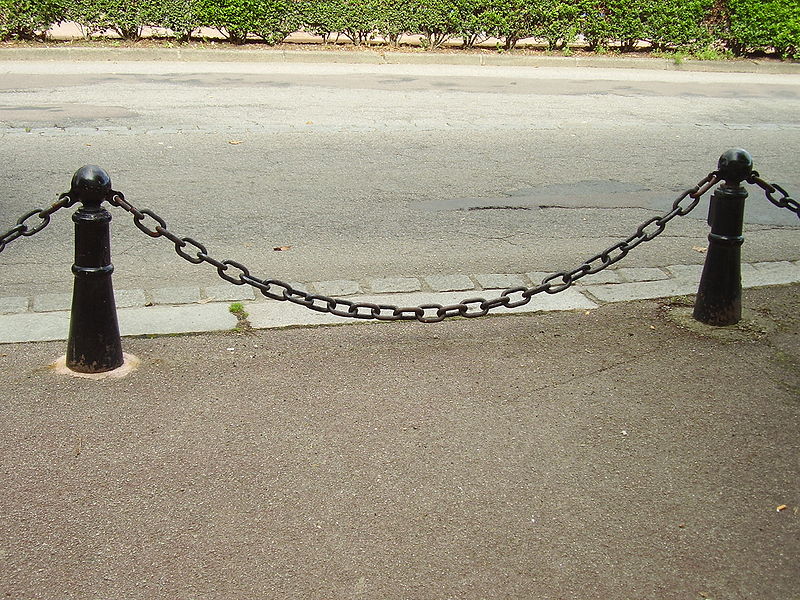Catenary
In physics or geometry, a cable or a chain hanging freely and acting under its own weight, supported only at its end points (not in a vertical line) and with no other load, takes the form of a catenary. This is different to the loaded cables supporting a suspension bridge, which take the form of a parabola.
 Although the two forms look very similar, they are mathematically different. In mathematical representation, the catenary uses a hyperbolic cosine while the parabola is far easier to represent with just a polynomial. Engineers may sometimes use the mathematics for a parabola when considering a catenary.
Although the two forms look very similar, they are mathematically different. In mathematical representation, the catenary uses a hyperbolic cosine while the parabola is far easier to represent with just a polynomial. Engineers may sometimes use the mathematics for a parabola when considering a catenary.
Both forms are always in tension and may be described as funicular forms, which are the forms assumed by cables (or chains) under any given load: the catenary is funicular because it bears only its own load, while the parabola is funicular because it carries load, as in a suspension bridge. A catenary can also be called alysoid or chainette.
In architecture and engineering, catenaries are used in bridge and arch design to avoid bending moments. The catenary is also regarded as the ideal shape for an arch that is free-standing and of constant thickness.
The English physicist and polymath Robert Hooke was the first to study the mathematical properties of catenary curves in the 1670s, while Leibniz, Huygens and Bernoulli derived equations for them in the 1690s.
[edit] Related articles on Designing Buildings
Featured articles and news
Delivering for tenants; National Retrofit Hub
New report offers recommendations to strengthen energy efficiency standards to protect private renters.
Government consultations for the summer of 2025
A year of Labour, past and present consultations on the environment, the built environment, training and tax.
CMA competitiveness probe of major housing developers
100 million affordable housing contributions committed with further consultation published.
Homes England supports Greencore Homes
42 new build affordable sustainable homes in Oxfordshire.
Zero carbon social housing: unlocking brownfield potential
Seven ZEDpod strategies for brownfield housing success.
CIOB report; a blueprint for SDGs and the built environment
Pairing the Sustainable Development Goals with projects.
Types, tests, standards and fires relating to external cladding
Brief descriptions with an extensive list of fires for review.
Latest Build UK Building Safety Regime explainer published
Key elements in one short, now updated document.
UKGBC launch the UK Climate Resilience Roadmap
First guidance of its kind on direct climate impacts for the built environment and how it can adapt.
CLC Health, Safety and Wellbeing Strategy 2025
Launched by the Minister for Industry to look at fatalities on site, improving mental health and other issues.
One of the most impressive Victorian architects. Book review.
Common Assessment Standard now with building safety
New CAS update now includes mandatory building safety questions.
RTPI leader to become new CIOB Chief Executive Officer
Dr Victoria Hills MRTPI, FICE to take over after Caroline Gumble’s departure.
Social and affordable housing, a long term plan for delivery
The “Delivering a Decade of Renewal for Social and Affordable Housing” strategy sets out future path.
A change to adoptive architecture
Effects of global weather warming on architectural detailing, material choice and human interaction.
The proposed publicly owned and backed subsidiary of Homes England, to facilitate new homes.
How big is the problem and what can we do to mitigate the effects?
Overheating guidance and tools for building designers
A number of cool guides to help with the heat.
The UK's Modern Industrial Strategy: A 10 year plan
Previous consultation criticism, current key elements and general support with some persisting reservations.
Building Safety Regulator reforms
New roles, new staff and a new fast track service pave the way for a single construction regulator.

























